#George davis
Text

1970 - Dizzy Gillespie Quintet au Théâtre Français de Bordeaux
Dizzy Gillespie (tp), Mike Longo (p), George Davis (g), Red Mitchell (b), David Lee (dr)
12 notes
·
View notes
Text
Round 1, Match 60

George Davis vs Donald Meek
2 notes
·
View notes
Text
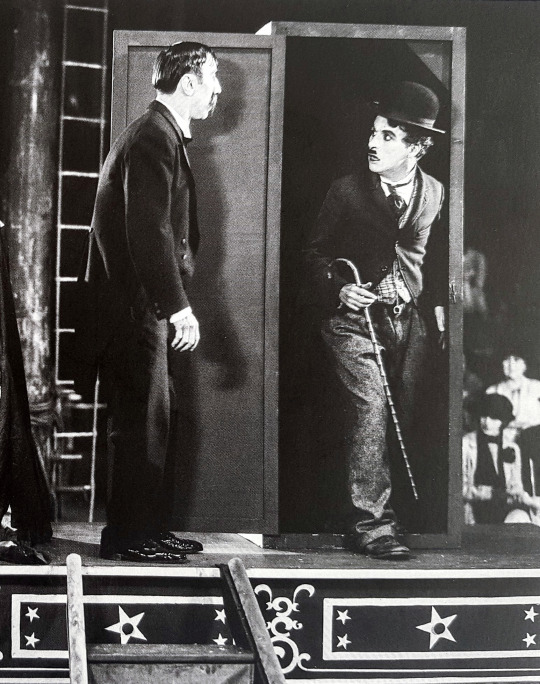

“The Circus” 1928
“I worked on this film for two years, from October 1925 till October 1927. By the time it came out, the talkies had be born.”
Charles Chaplin My Life in Pictures - 1974
10 notes
·
View notes
Text
Post-AGT Appearance 1295: George Davis KBXB 97.9 fm April 18
With Phillip out of a coma the matter of the last name on his sick list would again come to the fore. several baseball players have passed away recently and one of them: Whitey Herzog, would have been 80th on the first list of suspects, dropped to 81st in the first update, returned to 80th in the second update, sank a bit, rose to 80th again in 2017 and dropped out of the top 100 in 2020. Some people would be curious after his death. On Thursday morning I would be at my mother's house in Massachusetts, tending to her ailments when my agent would ask for a quote about Herzog. I would promptly reply and it would be released immediately on all websites. The first to quote me would be George Davis from radio station KBXB in Missouri. He hosts a classic country show from 10 am to 3 pm Monday through Friday. The station calls itself Freedom 97 and airs St. Louis Cardinals games. He would mention it just after 1 pm local time.
Davis: that was Missouri Misery, still a big hit around here. It's a little newer than most songs we play here, but it's by Phil Cole and we have an announcement about him. As you know he has a sick colleague named Phillip, who, I understand is feeling better since he heard that O. J. Simpson passed away last week. Well, he has a long list of folks who make him sick and some people around here have been wondering if Whitey Herzog, former coach of the Royals and Cardinals, might be the last mystery name on his list. Well, he just released a statement. I'll read it to you. It says:
PBC: No one on our team had any animosity against Whitey Herzog. Some of us were not so fond of Ken Holtzman though.
Davis: Well, that's all he says, but do you reckon it might be a baseball man on the list. It could be Pete Rose. Maybe it could be a Yankee. He's from Boston don't you know. Let's see: Derek Jeter or Mariano Rivera maybe..or it could be one of them steroids guys, Canseco or Mark Maguire. Let's have some fun. You can call me or text me. Is there a baseball player who makes you just a little queasy in the stomach every time you hear his name.
0 notes
Text





Mischa Auer & George Davis Hellzapoppin' (1941)
1 note
·
View note
Text

The Robe (1953)
Henry Koster’s The Robe, distributed by 20th Century Fox, appeared near the beginning of an era where religious epics and sword-and-sandal films became massive box office draws worldwide. Cecil B. DeMille’s Samson and Delilah (1949) and Mervyn LeRoy’s Quo Vadis (1951) had already laid the foundation on which Koster’s film, adapting Lloyd C. Douglas’ novel of the same name, would find its success. Despite The Robe being highly influential in Hollywood and becoming the highest-grossing film of 1953, the likes of DeMille’s The Ten Commandments (1956) and William Wyler’s Ben-Hur (1959) overtook it artistically and financially – no shame there, as those are two far superior films.
So what is The Robe’s claim to movie history beyond its initial theatrical earnings? When The Robe first came to theaters, 20th Century Fox advertised it as the first film ever made in CinemaScope. Created by Fox’s president, Spyros P. Skouras, CinemaScope was a format in which a widescreen camera lens contracted its widescreen shots onto regular 35mm film and, during theatrical projection, another lens would de-contract the image from the 35mm film in order to project a widescreen format. Theaters would only need to make minor, inexpensive modifications to their projectors in order to show a film in true CinemaScope, a 2:55:1 widescreen aspect ratio. Almost all other films were shot in the Academy ratio at the time (1.37:1, close to the 4:3 ratio – think: black bars on the left- and right-hand sides of a widescreen monitor – seen on many older standard computer monitors and televisions). With increasing competition from television, Fox executives believed CinemaScope could be a way to lure audiences back into theaters. Despite this overreaction from Fox’s executives (as well as the other major Hollywood studios), the legacy of CinemaScope’s innovation is still apparent today. Seven decades later, widescreen formats, not the Academy ratio, are the default in film and television.
Walking through the markets of Rome, returning Roman Empire tribune Marcellus Gallio (Richard Burton) reunites with his childhood sweetheart, Diana (Jean Simmons), who is now promised to Marcellus’ rival, Caligula (an always-sneering Jay Robison). Not long after, Marcellus – out of pettiness rather than financial sense – outbids Caligula for the Greek slave, Demetrius (Victor Mature). Marcellus immediately frees Demetrius, but Demetrius thinks of himself as honor-bound to stay by Marcellus. Elsewhere, an incensed Caligula reassigns Marcellus to Palestine – which, to the film’s Roman characters, might as well be the armpit of the Roman Empire. Marcellus and Demetrius go to Jerusalem, where they witness a man named Jesus enter the city, heralded by crowds of Jews greeting him with palms. Several days later, Judean Governor Pontius Pilate (Richard Boone) orders Marcellus to crucify Jesus on Calvary. Marcellus executes the order but, during and after the crucifixion, witnesses and experiences supernatural events. Demetrius, who has become a follower of Jesus during that week, obeys Marcellus when he asks him to fetch Jesus’ robe. The moment Marcellus dons the robe, he suffers something like a seizure. He falls out with Demetrius, and spends the rest of the film reckoning with his conscience over his role in Jesus’ crucifixion.
The film also stars Michael Rennie as Peter, Dean Jagger as Justus, Torin Thatcher as Senator Gallio, and Ernest Thesiger as Emperor Tiberius. Michael Ansara and Donald C. Klune are both uncredited as Judas Iscariot and Jesus, respectively.
The Robe has the misfortune of peaking in the first half. The adapted screenplay from Gina Kaus (1949’s The Red Danube), Albert Maltz (one of the blacklisted Hollywood Ten; 1950’s Broken Arrow), and Philip Dunne (1941’s How Green Was My Valley) is at its most interesting whenever Marcellus and Demetrius find themselves at odds with the other. In the scenes they share together, that happens often. But when Demetrius disappears after their disagreement over Jesus’ robe midway through, the film begins to sag with no foil for Burton to play off of.
For the entirety of this film, Richard Burton’s acting is overwrought. Burton, who had just arrived in Hollywood the year before to star in My Cousin Rachel (1952), is leaning too deeply into his theatrical roots here. His grandiose exclamations, stiff facial acting, and inconsistent line delivery result in a performance that is easily the weakest part of this film (Jean Simmons is also guilty, to a far lesser degree, of these same flaws in her performance). The Robe requires Burton’s Marcellus to undergo a spiritual conversion – becoming an adherent of Jesus despite following orders to crucify him, a developmental arc more dramatic than any other character’s in this film. Burton’s inability to convincingly sell this conversion (the stoic masculine tension, which some will interpret as coded homosexuality, between Burton’s Marcellus and Mature’s Demetrius does not help) weakens the film’s spiritual power.
Instead, it is Mature who is The Robe’s reliable scene-stealer. Mature, at one time likened to a “miniature Johnny Weissmuller”, has the classical Greek physique that, frankly, Burton does not. And in contrast to Burton at this time in their careers, Mature was more capable of a nuanced performance, as evidenced in his roles as Doc Holliday in My Darling Clementine (1946) and Nick Bianco in Kiss of Death (1947). As Demetrius, his soul hardened through his enslavement, there remains hope for a life free from the yoke of the Roman Empire and its callous slave masters. One sees it in his face during Holy Week, culminating with seeing Jesus dying on the cross. His faith is there, too, during a torture scene upon his return to Rome and an encounter with Peter. Amid miracles and cruelties, Mature’s Demetrius is simply the most compelling character of The Robe and the viewer – through Mature’s performance, especially in contrast to those of Jean Simmons and Richard Burton’s – can discern his genuine turn of faith. The Robe’s failure to showcase this inner awakening more believably is the fault of its two central actors and its screenplay; Mature’s performance and Demetrius’ characterization are all that saves the narrative.
One aspect of Christianity that The Robe captures confusingly (and oxymoronically) is the insignificance of Judea and the prominence of early Christianity in Rome in the time immediately following Jesus’ crucifixion. Oftentimes in Biblical epics, Judea is a centerpiece of the Roman Empire when, in truth (and in The Robe), it was a relative backwater. By Caligula’s reign between 37 and 41 CE, Christianity almost certainly would not have had a substantial presence in Rome at that time. So while Caligula would probably see Christianity as a threat, the film’s decision to treat the early Christians as a clear and present danger to his rule and the Roman state religion is the film’s glaring historical inaccuracy. The Robe – the book and the film – muddies the timeline from Jesus’ crucifixion to the film’s final scene in Caligula’s court. The relative suddenness of the Roman Empire seeing the early Christians as a very minor cult into becoming an Empire-wide menace is difficult to reconcile.
With few other post-silent film era Biblical epics as a guide, The Robe helps set the aesthetic of its fellow Biblical epics and sword-and-sandals movies going forward through its costumes and production design. The work of costume designers Charles LeMaire (1950’s All About Eve, 1956’s Carousel) and Emile Santiago (1952’s Androcles and the Lion, 1958’s The Big Country) is resplendent, regardless of either the Roman or Judean setting. Art directors Lyle R. Wheeler (1939’s Gone with the Wind, 1956’s The King and I) and George Davis (All About Eve, 1963’s How the West Was Won) and set decorators Walter M. Scott (All About Eve, 1965’s The Sound of Music) and Paul S. Fox (The King and I, 1963’s Cleopatra) all make full use of the CinemaScope format and color to enliven the scenery – a sumptuous visual treat for the viewer, and, to reiterate, setting a standard that the crew of The Ten Commandments and Ben-Hur both would study and surpass.
Of all of 20th Century Fox contracted stalwarts behind the camera, composer Alfred Newman was the studio’s most important figure. If Fox’s executives needed a composer to craft a score for what they would consider would be their prestige motion picture of the year, Newman – who composed the original 20th Century Fox fanfare and its CinemaScope extension (the extension, which is now inextricable from the fanfare, was first introduced in 1954’s River of No Return) – was almost always their first choice.
youtube
In one of Newman’s finest scores of his career, it is his choral compositions, with incredible help from his longtime choral supervisor Ken Darby, that form the score’s emotive spine. Jesus’ motif, shared between wordless choir and strings, appears almost immediately, in the opening seconds of the “Prelude”. During the many invocations of a Messiah before Jesus’ first physical appearance in The Robe, his motif shifts, changes form, and modulates – imparting not spiritual comfort or devotion, but a mysteriousness and otherworldliness. When Jesus (whose face we never see) first appears in Jerusalem on Palm Sunday, the cue “Passover/Palm Sunday” represents one of the rare juxtapositions of the brass-heavy martial music representing the Roman presence in Judea and Jesus himself. The modulation to a major key at 1:22 in this cue, with festive percussion, also includes one of the only instances of celebratory choral music in the score. Jesus’ motif in “Passover/Palm Sunday”, appears at 2:26 – cementing his (and Christianity’s) association with the cue, and appearing as the only instance in which one might consider this motif triumphant.
Choruses, which Western viewers so often associate in religious movies as angelic musical devices, become mournful in “The Crucifixion” – arguably the standout cue of Newman’s score. Even though one might be well aware of Jesus’ death and can anticipate a turn in the music (starting moments earlier in “The Carriage of the Cross”), it is startling to hear Newman’s composition change so rapidly. But it is in these several minutes depicting Jesus’ final moments that Newman, with modifications to his harmonies and orchestration, transforms Jesus’ motif to evoke its tragic dimensions. It is magnificent scoring from Newman, and this is not even mentioning his wonderful demarcation of Roman and Judean identities through his score.
In a film about faith – how it comforts, destroys, heals, and vexes – one wishes that the characterization of The Robe’s supposed lead characters in Marcellus and Diana could feel more plausible. The film’s final scene, possibly allegorizing of screenwriter Albert Maltz’s travails as a blacklisted figure in Hollywood, is decently powerful, but it needs far more storytelling support from numerous scenes preceding it.
As it is, the film’s expressive power lies within Demetrius and Victor Mature’s performance. So how fortunate that, because Fox also wanted to make a sequel to The Robe even before it finished production, Mature also signed a contract to appear in a sequel. Nine months after The Robe made its theatrical debut, Victor Mature starred in Demetrius and the Gladiators, directed by Delmer Daves and also seeing Michael Rennie and Jay Robinson reprise their roles as Peter and Caligula, respectively. Though it did not top the box office for that year like The Robe did, Demetrius and the Gladiators was a financial boon for Fox.
With Hollywood’s major studios always ready to respond to the box office successes of their rivals, The Robe helped make possible the decade of Biblical and sword-and-sandals epics to come – and the required viewings for many a Sunday School student in the years hence. These films were Studio System Hollywood in full maximalism, adopting human and tactile scales seldom seen today.
Yet outside of churchgoers, The Robe – for its CinemaScope and genre-specific innovations – has seen its standing slip gradually over the years, no thanks to the reputations of better movies of this tradition and, regrettably, decisions to keep 20th Century Fox’s valuable past under lock and key. 20th Century Fox’s refusal to distribute their classic films more often and more widely – before and after the studio’s 2019 takeover by the Walt Disney Company (and post-takeover, I believe the situation is now worse) – is resulting in films like The Robe slip through the proverbial cracks of film history, sights unseen for younger film buffs. That is unfortunate, especially as The Robe, almost incidentally (and no matter my aforementioned criticisms of the work itself), continues to quietly wield, by virtue of being the first CinemaScope film, a remarkable influence over cinema worldwide.
My rating: 6/10
^ Based on my personal imdb rating. My interpretation of that ratings system can be found in the “Ratings system” page on my blog. Half-points are always rounded down.
For more of my reviews tagged “My Movie Odyssey”, check out the tag of the same name on my blog.
#The Robe#Henry Koster#Richard Burton#Jean Simmons#Victor Mature#Michael Rennie#Jay Robinson#Dean Jagger#Torin Thatcher#Richard Boone#Michael Ansara#Leon Shamroy#Alfred Newman#Ken Darby#Charles LeMaire#Emile Santiago#Lyle R. Wheeler#George Davis#TCM#My Movie Odyssey
1 note
·
View note
Text


Veteran east coast animation cameraman, George Davis, recalls how he helped Terrytoons out with their transition into CinemaScope cartoons
From a 2005 issue of Frames Per Second (FPS) Magazine, article by Noell Wolfgram Evans
#animation#golden age of animation#terrytoons#cameraman#george davis#new york animation#magazines#frames per second#camera#fps magazine#good deed daly#bird symphony#cinemascope#1950’s#1955#paul terry#fps#articles#behind the scenes
1 note
·
View note
Photo


I could make serious fanart
Or I could make some of the stupidest shit anyone has ever seen
#across the spider-verse#Miguel O’hara#Peter B Parker#Jefferson Davis#George Stacy#A family can be four dads#that’s it just four dads no kids#my art
16K notes
·
View notes
Text
I still think about how Gwen's dad pointed a gun at her, and then got mad when Gwen didn't want to talk/look at him.
Like, sir, you pointed a GUN to your teenage DAUGHTER. You raised your gun back up after she unmasked.
Like, you found out Spider-ghost was your daughter and you still thought she killed HER best friend?? And on purpose??
You had a duty as a police man to what?? Shoot your unarmed teenage daughter if she tried to leave?? Instead of trying to let her explain at least??
Even Aaron let Spiderman go when he found out he was his nephew, and he was the villain.
#I don't even hate the character but wtf#jefferson morales would never#across the spiderverse#spider man: across the spider verse#atsv#spiderman atsv#gwen stacy#spider gwen#captain stacy#george stacy#aaron davis#jefferson morales#miles morales#spiderman#spiderman itsv#itsv#into the spider verse#spider ghost
4K notes
·
View notes
Text




why was i not informed about jeremy "scoobynatural" adams pitching a superwholock episode in season 15
#supernatural#jeremy adams#superwholock#davy perez you and your magic: the gathering cards can hush#from the archives#spiders georg of the tnt loop did not know about this#i didn't know about this#therefore posting
439 notes
·
View notes
Text
The Monkees and The Beatles being friends is something that can be so personal






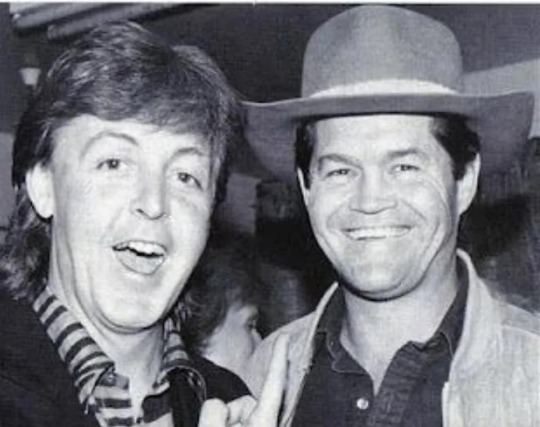



#the greatest crossover ever (in my opinion)#also I will never shut up about the picture of michael and george#my beloveds#the monkees#the beatles#michael ❤️#michael nesmith#george 💛#george harrison#peter 🧡#peter tork#paul 🤍#paul mccartney#micky 💚#micky dolenz#john 🍋#john lennon#davy 🩵#davy jones#ringo 🥁#ringo starr#60s#70s#80s#honey chats
216 notes
·
View notes
Text




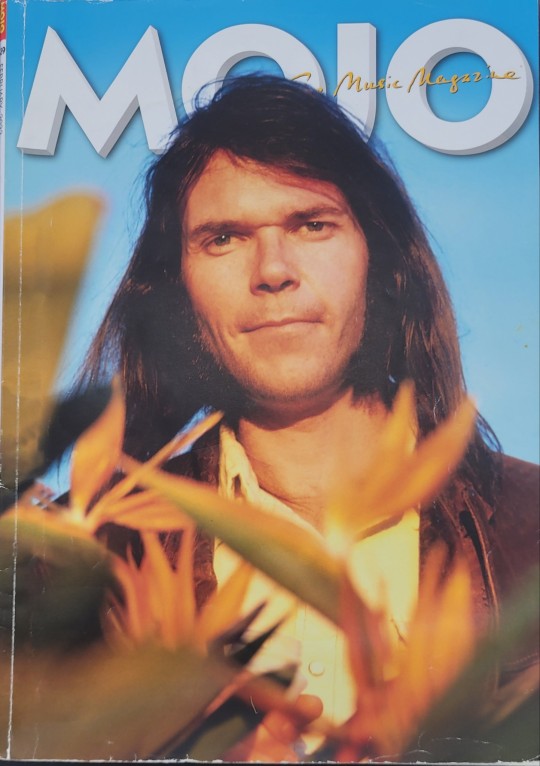

copies of mojo i found at the library :)
#i want all of them SOOOOOO BADDDDD im gonna have to look arnd on trademe n stuff#magazines#mojo magazine#music magazine#mojo#the monkees#monkees#george harrison#the beatles#beatles#neil young#david bowie#mike nesmith#michael nesmith#peter tork#davy jones#micky dolenz#paul mccartney#john lennon#ringo starr#60s#70s#70s music#60s music
856 notes
·
View notes
Text
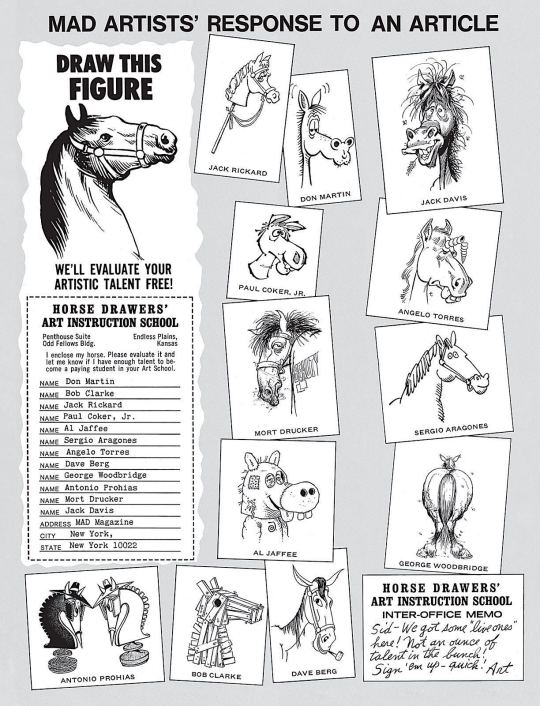
MAD Artists' Response to an Article (MAD #178, October 1975)
Artists: the Usual Gang of Idiots
#Mad magazine#horses#Don Martin#Jack Davis#Al Jaffee#Mort Drucker#Sergio Aragones#Dave Berg#Paul Coker Jr#Jack Rickard#Angelo Torres#George Woodbridge#Antonio Prohias#Bob Clarke#vintage#1970s#draw this figure#horse#art instruction school#ad parody
176 notes
·
View notes
Photo

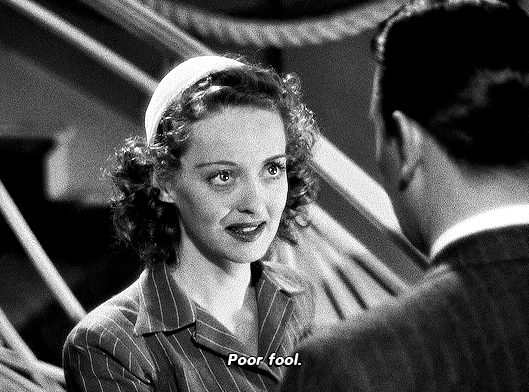


Sorry. You couldn't have said anything I wanted to hear more.
DARK VICTORY (1939)
#dark victory#bette davis#george brent#classicfilmsource#uservintage#usermulder#uservienna#classicfilmcentral#classicfilmblr#cinemapast#silverscreendames#romancegifs#userlenie#usersuzanne#*gifs#1930s#bestie davis
1K notes
·
View notes
Text

Bette Davis in The Letter, 1940

Tallulah Bankhead in The Cheat, 1931
#film#movies#black and white#pre code hollywood#pre code#tallulah bankhead#bette davis#william wyler#george abbott#gif#animation#1940s#1930s#vintage
158 notes
·
View notes
Text
ROUND 1, MATCH 10


225 notes
·
View notes